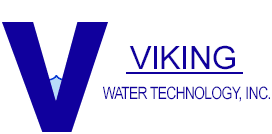Proven steps to enhance protection and avoid unnecessary damage
Even when a cooling system is well taken care of during the operating season, avoidable damage may occur should proper start-up or end-of-season shut-down procedures be omitted. The following procedures will help minimize any damage to systems during these transistion times.
START-UP
- If the tower basin or any sumps are dirty from sitting idle, clean and flush to drain.
- On initially filling with fresh water, add a passivating dosage of corrosion inhibitor, usually 2 to 3 times the maintance level, and circulate at least 48 hours. A special product designed for pre-filming the system is usually superior and may be required.
- If the system runs intermittently, assure that microbiocides are added and then recirculated for 2 to 4 hours each week.
- Run the system at lower cycles of concentration to prevent foulant drop-out during off periods. Addition of a special dispersant may also serve to keep impurities in suspension during these same times.
DURING INTERMITTENT OPERATION
- As the cooling season is coming to a close, decrease cycles of concentration to prevent the high levels of dissolved and suspended solids from dropping out while the system is off-line.
- Prior to shut-down, add a non-oxidizing microbiocide to kill any biological growth which may be present. Stagnant water provides ideal conditions for biological growth.
- To loosen and penetrate existing “bio-film” or other foulants, a separate dispersant or bio-dispersant may be required.
AT SHUT-DOWN TIME
- A special take-down and lay-up treatment should be added to the system and circulated for several days. This type of product is used to minimize pipe slag formation, and is added during the last few days of planned operation.
- Once off-line, drain all pipes, equipment and the tower sump as needed ot prevent freezing. Wherever possible, power wash or flush all mud and debris from the sump.
- If the condenser is to be laid up wet, the unit should be drained of all tower water. Add fresh make-up water along with a non-oxidizing microbiocide and a high level of corrosion inhibitor.
- Take chemical feed and control system off-line. Clean and service them as needed. Remove conductivity and pH probes from the system; clean and store properly. Chemical feed pumps should be flushed with fresh water.
